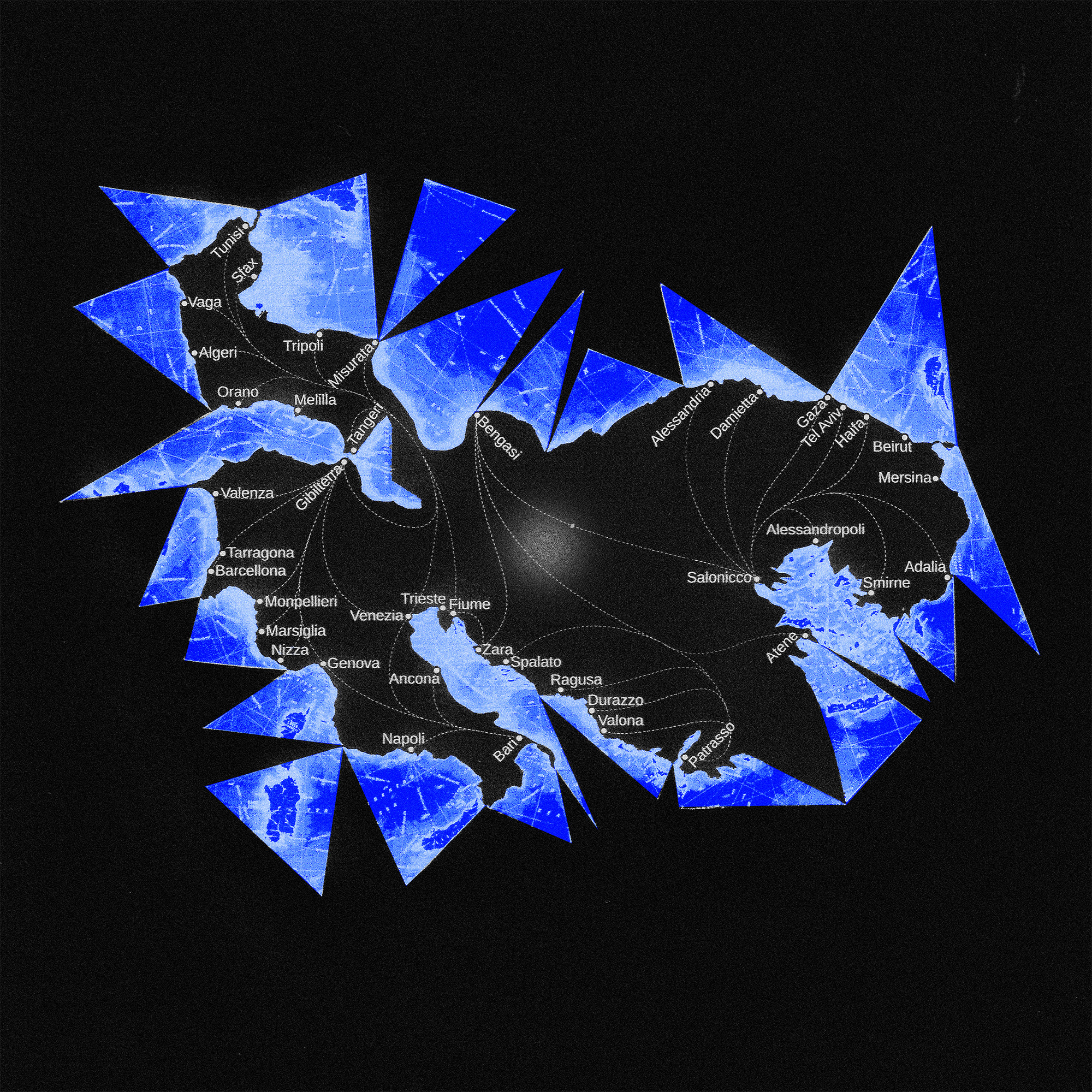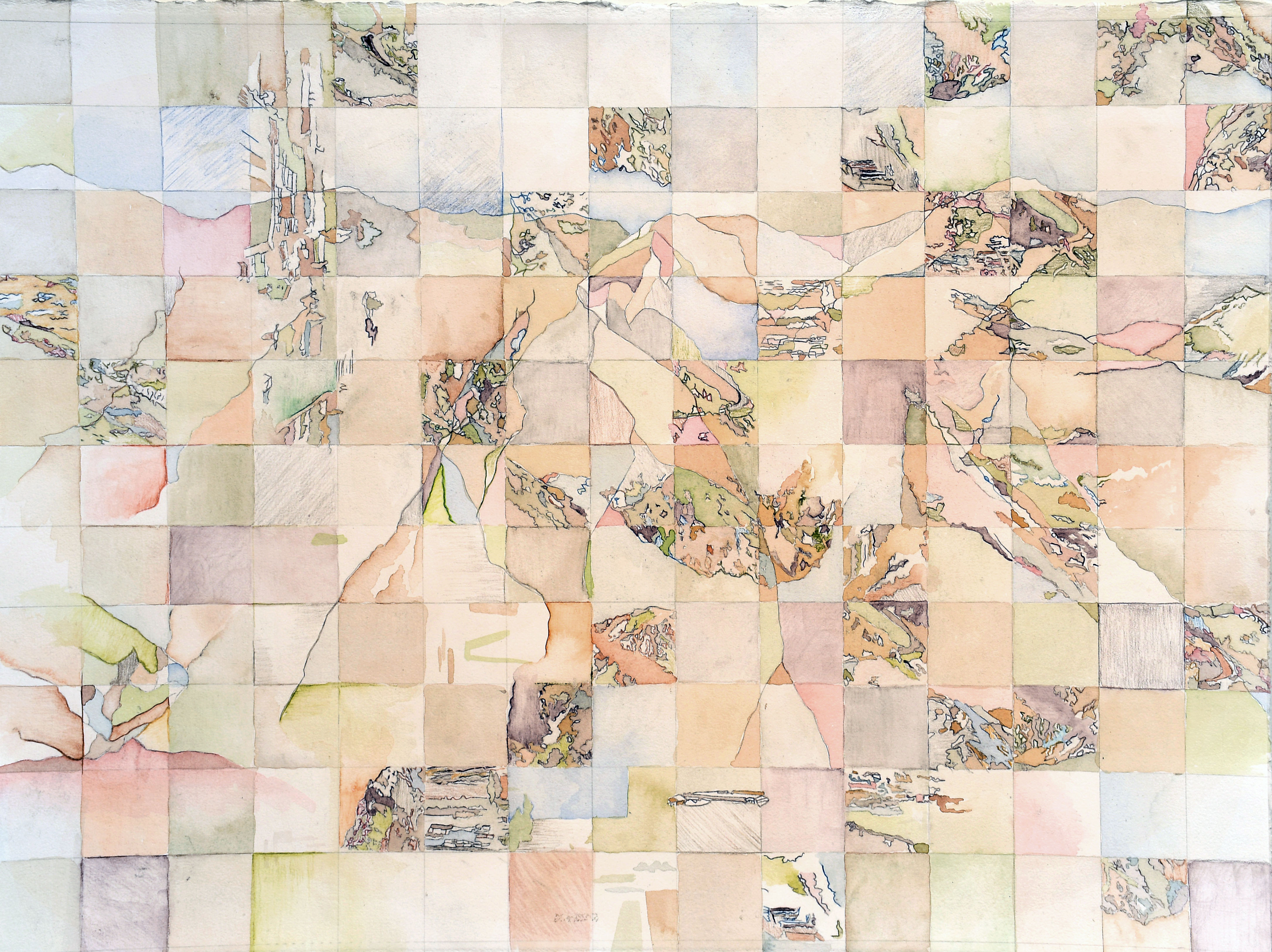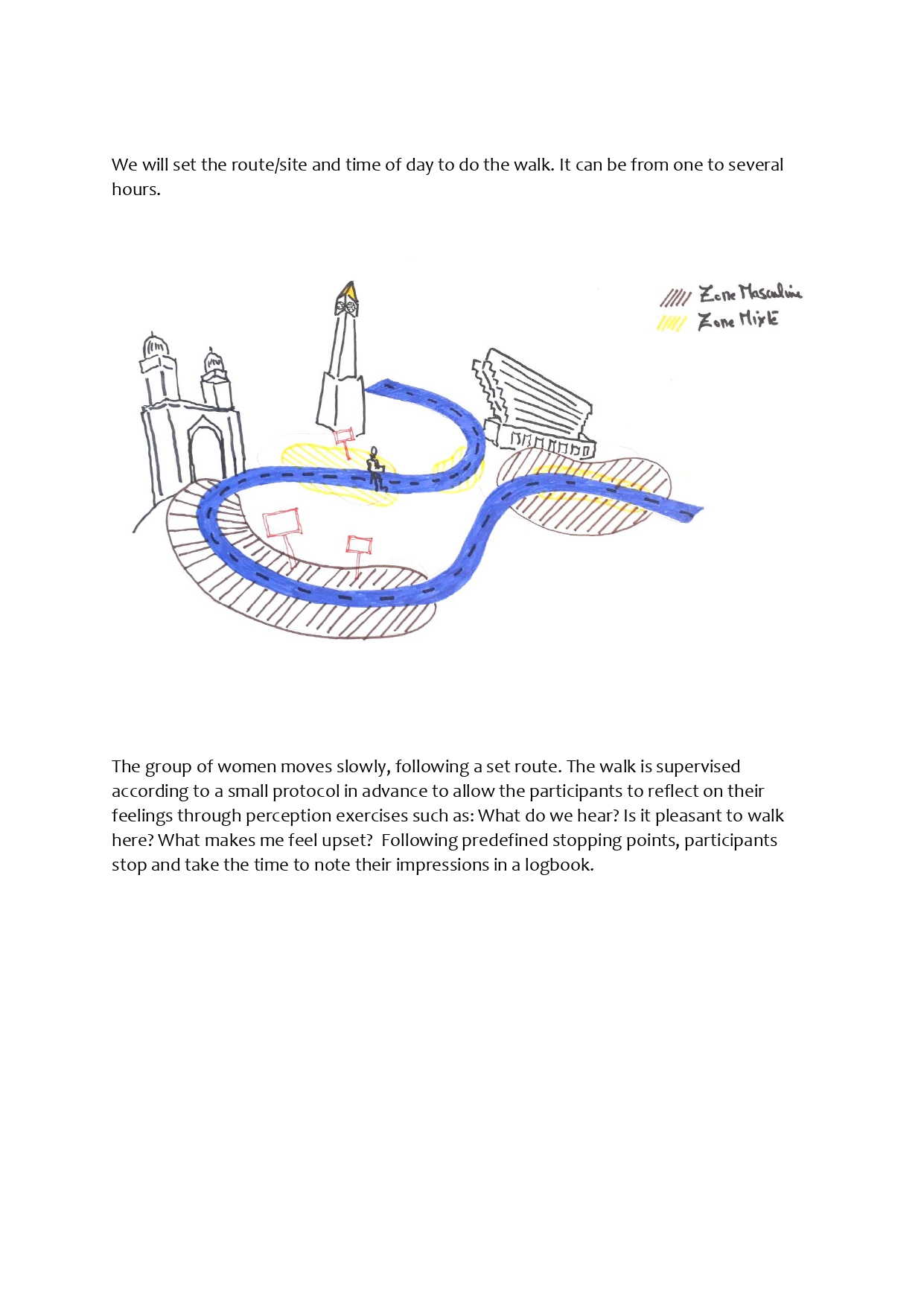THE AUTHORITY
The construction of maps has long belonged to those who claim authority. We construct maps and establish borders to separate or unify inhabitants, cultures, and identities. Do we see how far power stretches? Do we see injustice or resistance? The memories of people who live on the land? Maps as “The Authority” shows a selection of artworks reflecting, questioning and reimagining mapping and its purpose. The maps of today still use the same depiction; of objects, regions, lines, landscapes. Is it possible to show the reality of the inhabitants’ lives? As we evolve as societies, we create new networks, (power) dynamics, and identities. This constant movement of the structured life, changes of ownership and authorities may take many realities as we collectively (re)construct them.
Fe Simeoni shows us borders as pieces of our collective imaginations. By cutting the Mediterranean Sea into 23 triangles and rearranging the coastline, a closed island is created. Mare nostrum becomes terra nostra connecting Venice and Tunis, Thessaloniki and Alexandria. What changes would such a shift create? Our identities are deeply rooted in the landscape we grew out of - as Laura Kern’s piece titled “Chipping” deals with the notion of culture and geography. Culture is constructed through the life of generations lived by sea, mountains or great plains. Or in fact, our differences were always constructed by geographical features, imagined connotations of east and west, north and south. Gabriela Manfredini looks at our world map as a chess game; strategically built, but variable. Would then the idea of a borderless melting pot be too far-fetched?
As these three works look at our maps as constructions of societies we invite you to look closer and think about how authority decides visibility. Bahar Majdzadeh creates the “Map of Absentees”, an intelligible link between public space, political violence and group memory. The open project shows fifteen political Iranian refugees whose exile originated in the political destruction that occurred in Iran between 1979 and 1988. Each voice tells a memory, a thought, an analysis or an event linked to a specific place in Tehran. The stories together with the map of the city try to create a contrast between the past and the present. The Map of the Absentees can be comprehended as a small act of resistance in the face of the map’s authoritarian power. Diego Inestrillas calls the authorities into question as femicides in Mexico continue to increase and the cases of missing persons number a staggering 110.000. The gravity of invisibility is also shown by Afef Omri in the work called “My place in the city”. The "right to the city" is subject to historical and cultural construction. At first glance, social mixing seems to be a given, except that access to urbanity has never been democratic. The use of public space seems to consciously respond to gender norms, to gendered behavioural codes. As “women,’ we develop micro-tactics of protection based on where we go, and who we are surrounded by.
George Mercurius’s ongoing photography project called “The Golden Ear” shows authority from a different angle. The project is a journey to explore the Coptic Orthodox monastic life in Egypt. It seeks to understand the daily routine and spiritual practices of modern-day monks, as well as what life was like in Qalali in the middle of the desert and in the mountains. May we find authority in institutionalised religious practice? Or in those who choose to leave mainstream society and practise voluntary asceticism?
Fe Simeoni shows us borders as pieces of our collective imaginations. By cutting the Mediterranean Sea into 23 triangles and rearranging the coastline, a closed island is created. Mare nostrum becomes terra nostra connecting Venice and Tunis, Thessaloniki and Alexandria. What changes would such a shift create? Our identities are deeply rooted in the landscape we grew out of - as Laura Kern’s piece titled “Chipping” deals with the notion of culture and geography. Culture is constructed through the life of generations lived by sea, mountains or great plains. Or in fact, our differences were always constructed by geographical features, imagined connotations of east and west, north and south. Gabriela Manfredini looks at our world map as a chess game; strategically built, but variable. Would then the idea of a borderless melting pot be too far-fetched?
As these three works look at our maps as constructions of societies we invite you to look closer and think about how authority decides visibility. Bahar Majdzadeh creates the “Map of Absentees”, an intelligible link between public space, political violence and group memory. The open project shows fifteen political Iranian refugees whose exile originated in the political destruction that occurred in Iran between 1979 and 1988. Each voice tells a memory, a thought, an analysis or an event linked to a specific place in Tehran. The stories together with the map of the city try to create a contrast between the past and the present. The Map of the Absentees can be comprehended as a small act of resistance in the face of the map’s authoritarian power. Diego Inestrillas calls the authorities into question as femicides in Mexico continue to increase and the cases of missing persons number a staggering 110.000. The gravity of invisibility is also shown by Afef Omri in the work called “My place in the city”. The "right to the city" is subject to historical and cultural construction. At first glance, social mixing seems to be a given, except that access to urbanity has never been democratic. The use of public space seems to consciously respond to gender norms, to gendered behavioural codes. As “women,’ we develop micro-tactics of protection based on where we go, and who we are surrounded by.
George Mercurius’s ongoing photography project called “The Golden Ear” shows authority from a different angle. The project is a journey to explore the Coptic Orthodox monastic life in Egypt. It seeks to understand the daily routine and spiritual practices of modern-day monks, as well as what life was like in Qalali in the middle of the desert and in the mountains. May we find authority in institutionalised religious practice? Or in those who choose to leave mainstream society and practise voluntary asceticism?
Fe Simeon is an information designer based between Treviso and Helsinki. His practice involves data visualisations and maps for genetic research, geopolitical journalism and education.

Maps are great for establishing borders. But what if we cut maps with scissors and redefine limits and connections? We might uncover new geographies where we are closer than the expected. Borders are pieces of collective imaginations.
"Mediterraneo Upside Down" sliced the Mediterranean Sea into 23 triangles, rearranging the coastline to create a closed island. Land connections could then be drawn between Venice and Tunis, Tessaloniki and Alexandria. From mare nostrum to terra nostra.

Growing up in rural Pennsylvania deeply impacted my way of life and thinking. My work examines the relationship between culture and landscape. I question how identity, society and geography inform one another. I use various media, including found objects, fabric, and metal, to visualise this relationship. These conglomerations of found and created objects explore landscapes in relation to social issues.
studies for chessboard I, II
Artist: Gabriela Manfredini ︎
Gabriela Manfredini is a Brazilian artist based in Porto. Her artistic practice is multidisciplinary, but in the past three years, she has been working mostly with drawing and performance. She is interested in addressing themes such as feminism and Anthropocene and has recently focused on investigating the relations of contemporary work culture, body and productivity to create performances.

Joaquín Torres García's America Inverted (1943) served as the origin for the idea of retracing and repositioning the world map. The world can be divided into countries, into east/west or north/south. However, the game of chess was used to rethink these divisions and resignify existing borders. Can we imagine a future world where borders will not be necessary?
My place in the city
Artist: Afef Omri
Afef Omri is a Visual artist, architect, designer, curator who lives and works in Tunis. In her approach, she varied the artistic mediums: installation, performance and drawing to question the relationship between art and architecture, the status of the 'artist' and the social impact of this relationship through creative practices / architectural experimentation in public space / building with local communities and following an inclusive and feminist approach.




The "right to the city" is subject to a historical and cultural construction. At first glance, social mixing seems to be a given, except that access to urbanity has never been egalitarian. The use of public space seems to consciously respond to gender norms, to gendered behavioral codes. As a ‘woman’ we develop, according to the "space-time"; the places we frequent, day or night, and the degree of "mixity" of these places, micro-tactics of protection, real strategies sometimes without realizing it.

